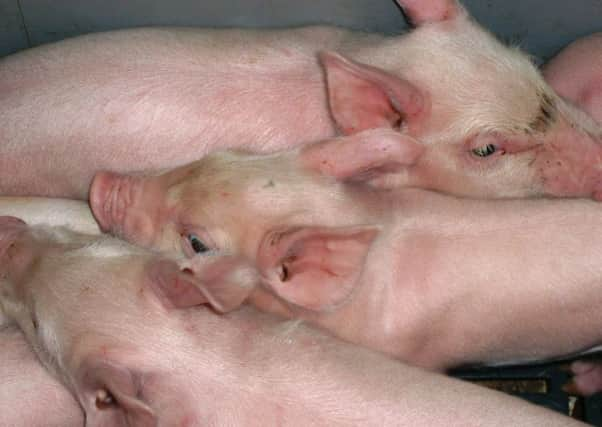DAERA Management Notes: Pigs


Antimicrobial resistance or AMR as it is commonly known is now recognised as one of the most serious global threats to human health. It has been described as the ‘silent tsunami’ and predictions are that by 2050 more people will die from AMR than cancer.
How do you reduce antibiotic usage? Reducing use is not easy but it is possible. It may involve making changes to management, husbandry, housing, ventilation and/or nutrition. It may even involve the use of autogenous vaccines which target problems specific to your farm. A good starting point is to identify where the different amounts of antibiotics are used as this will highlight problems areas. Accurate and regular diagnosis is key to ensure the right antibiotic is used for the right bacterial infection. Before making any changes to antibiotic use talk to you vet as cutting out an antibiotic or reducing the dose rate could do more harm than good.
Advertisement
Hide AdAdvertisement
Hide AdIf you would like to learn more about AMR and what you can do to reduce antibiotic use why not attend one of the Farm Family Key Skills training courses which are being held between now and the end of March. At the course local pig vets will discuss how AMR develops, what increases the risk of antibiotic resistance and what can be done on farm to reduce use. For more information on the courses please contact Susan at [email protected].
Start off the New Year by talking to your vet about the possibility of reducing use, bearing in mind you should “use as little as possible but as much as necessary”.
Make 2019 the year you keep your records up to date!
Record keeping is now ‘part and parcel’ of pig production with the list of records required getting longer and longer! As well as keeping detailed physical and financial performance records other information needed includes:
* Medicine records - purchases, administration and disposal.
* Antibiotic usage.
Advertisement
Hide AdAdvertisement
Hide Ad* Mortality records - date, number, type, identity, found dead or euthanised and suspected reason for all sow/pig deaths.
* Bait point inspection and replenishment dates and bait used.
* Weekly alarm checks.
* Outbreaks of tail biting and facial scarring.
* Staff training records - training given, date, training provider and annual review date.
* Slurry export records.
* Pig movement records.
* Meal mixing records.
It is sometimes easy to get behind in record keeping, especially at very busy times. Although keeping records up to date has always been very important it is more important now due to the introduction of unannounced Red Tractor quality assurance inspections. From November last year unannounced inspections will take place depending on the number and nature of non-conformances found during an inspection.
Advertisement
Hide AdAdvertisement
Hide AdStart off the New Year by getting all your records up to date and keeping them up to date!
Make 2019 the year you weigh pigs!
What weight are your pigs at weaning and at the end of first stage and second stage? Weighing batches of pigs at the end of each stage provides valuable information. It allows you to check if your pigs are reaching their target weight for age and to calculate their growth rate. Regular weighing is important as it identifies any changes in growth rate. If you detect a decrease in growth rate you can then target changes to that part of the system to improve performance. As the saying goes you cannot fix a problem if you don’t know what it is!
Start off the New Year by weighing a few batches of pigs and checking if they are meeting their target weight for age.
Chinese ‘Year of the Pig’
2019 is the Chinese ‘Year of the Earth Pig’. According to the Chinese zodiac ‘2019 is a year of fortune and luck. It is a great year to make money and a good year to invest’! Let’s hope it is right!